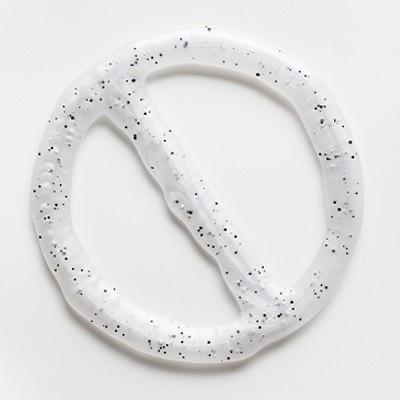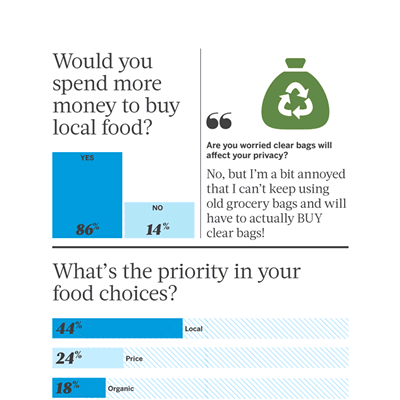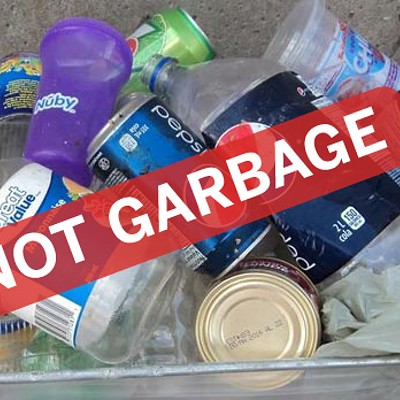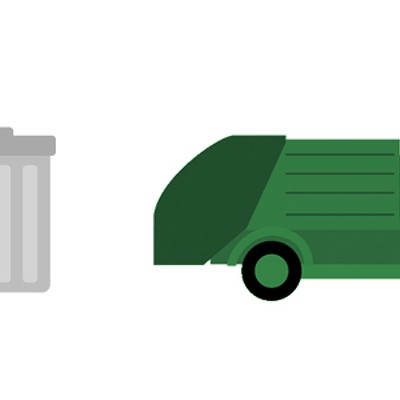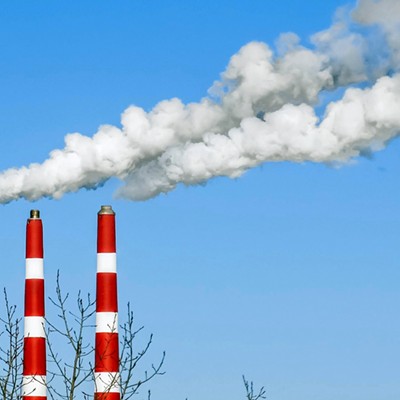I'm not much of a do-gooder. It's not that I'm a no-gooder, just that I don't make a big deal of living ethically and convincing others to do the same. I try my best, but beyond composting and riding a bike, I'm not much of an environmentalist. This is why it was a really bizarre and uncharacteristic thing for me to try and live without plastic for a week.
But I did it. For a bird.
The albatross is a badass bird. With a wingspan as wide as 11 feet, the wandering albatross is the longest-winged animal in the world. These guys can fly 10,000 miles without ever flapping their wings. It's called dynamic soaring.
Like I said, badass.
When I saw the trailer for a documentary called Midway, directed by Chris Jordan, I had to take a minute. It shows images of sick misshapen birds, dead birds floating ominously in the water. One image in particular made my stomach turn–a bird autopsy of sorts, and inside this feathery creature is a full lighter and little plastic bottle caps.
The thing about plastic is it lasts forever. Even though it's technically made of biomaterial, it does not biodegrade, so all of your lids, Lego pieces and lighters are going be here long long after you're dead. And a lot of it finds its way in to the ocean where it floats around in these giant conglomerations called gyres. The albatrosses in Midway are dying from plastic that they had nibbled off of the world's biggest gyre, known as The Great Pacific Garbage Patch, or Plastic Vortex. Yes, vortex–this plastic soup is almost twice the size of Texas.
So yeah, I'm no do-gooder but I am a coastal woman. I love me some beach almost as much as I love the albatross, so thinking about both of these guys being riddled with nasty plastic bits made me want to never use plastic again. So that's what I tried to do, for a week.
It was not easy.
Once you start to notice it, plastic is everywhere. The first morning of my challenge I woke up, went to the bathroom and had a little plastic-induced freakout. Every hair product, razor and floss container was tainted with the stuff. I did a little research and learned that some people who go plastic- free end up buying wooden horse hair toothbrushes. Horse hair, in your mouth. As the week went on I came to learn that that's the kind of bizarre innovation that the plastic-free life is all about!
I quickly noticed that every activity I do in my day involves touching, buying and throwing away plastic. This computer I'm typing on has plastic keys. My cell phone case has a plastic case. The key that unlocks my bike has plastic on it.
I decided that I wasn't going to be able to live without these essential things but I would try to not bring any new plastic in to my life. This made eating food extremely difficult.
The grocery store is pretty much a plastic minefield. Or actually it's more like a food prison. I would walk down the aisles and see all my old friends–strawberries, yogurt, beef jerky, hummus–but they'd all be hidden in a thin layer of evil. Out of bounds because of their cruel plastic exteriors, so close and yet so far!
I asked one helpful grocery store dude if there were any berries that came without plastic. He pointed at a display of local berries and said, "How about those?"
They were all in plastic cartons. It was like he was plastic-blind!
At the fish counter things got kind of interesting. I ordered some shrimp. The guy started scooping it up, but when he went to grab the plastic bag I stopped him: "Hold up, not so fast!" I remembered hearing that some plastic-free people use paper mushroom bags as an alternative to plastic ones. So I got the shrimp guy to freeze his scooper as I ran to the mushroom aisle and grabbed some. (Note: A soggy paper bag full of seafood is not a friend-maker. I definitely found a little bit of paper in my pasta.)
But I figured out I could kind of eat around the edges of the grocery store–peppers, a carton of eggs.
The biggest heartbreaker was the cheese.The truth is that I'm lactose intolerant but I love cheese so much that I sacrifice the integrity of my bowels to have the glories of cheese in my life. Cheese is my life. So when I asked the cheese lady if she had any that didn't come in plastic and she just raised an eyebrow and said, "Uh, not that I know of."
I knew that this plastic-free thing might be the death of me.
I was determined, though. I didn't want the world to lose the dynamic soaring albatross. I wanted to do my part. I started thinking about the nature of plastic itself and how the reason it's used so much is because it's both bendy and strong, it's adaptable. It dawned on me that in order to beat plastic, I had to become plastic. I had to bend.
I found myself in some weird situations: The time I asked to get my pickles in a paper bag, or when I asked for a handful of sausages. I made some pretty outlandish requests, but people were accommodating. I learned to start carrying Mason jars around with me for both food and drink. I stopped getting straws and started using matches more.
By the end of the week I was embracing these little adjustments. There's no way that I was going to do another week without cheese, but I could easily keep carrying a Mason jar around, and who needs straws anyway? I know that my using matches instead of a lighter isn't going save the albatross or dissolve the Plastic Vortex, but it definitely was an eye-opener.
Plastic is everywhere, but I started to think that alternatives are too.
Plasticity being able to adapt.
Listen to Veronica’s Greenpeace Canada podcast on plastic


